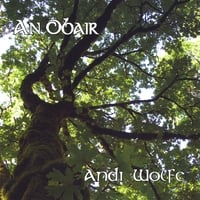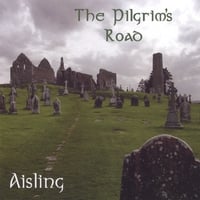 The flights from Ohio to Beijing are long, except for the hop to Detroit. I had a flight from Detroit to Narita, Japan and then a flight to Beijing. The flight from Detroit to Narita is more than 13 hours, which is very uncomfortable in economy class.
The flights from Ohio to Beijing are long, except for the hop to Detroit. I had a flight from Detroit to Narita, Japan and then a flight to Beijing. The flight from Detroit to Narita is more than 13 hours, which is very uncomfortable in economy class.When I handed my boarding pass to the flight attendant at the gate in Narita, Japan I was handed a different boarding pass, which bumped me up into business class. Hurray for frequent flier status! It was so nice to stretch out for a bit and to take a nap. That flight was not quite 4 hours, but it was enough comfort to get me a bit more relaxed than I was. The nap really helped.
 I was met in Beijing by the managing editor of the Journal of Systematics and Evolution, and was taken to my hotel. I arrived pretty late in the evening and arrived to my hotel (Fragrant Hills something or other) just before midnight. I had to be up early the next day for a ride to the airport to catch another flight to Kunming.
I was met in Beijing by the managing editor of the Journal of Systematics and Evolution, and was taken to my hotel. I arrived pretty late in the evening and arrived to my hotel (Fragrant Hills something or other) just before midnight. I had to be up early the next day for a ride to the airport to catch another flight to Kunming.The room was comfortable and modern, but you can't drink the tap water anywhere in China. Fortunately, purified bottled water and a hot pot for boiling water are provided at all the hotels.

Most of the better hotels have a room safe. Those cylinders are for smoke hoods in case of a fire evacuation. Slippers are also provided at all of the hotels, which is something one can quickly get used to.
 A driver from the Chinese Academy of Sciences took us (myself and my colleagues, Jim Doyle and Sean Graham) to the airport. We left the hotel at 6:30 am, which meant I had about 4 hours of sleep at best.
A driver from the Chinese Academy of Sciences took us (myself and my colleagues, Jim Doyle and Sean Graham) to the airport. We left the hotel at 6:30 am, which meant I had about 4 hours of sleep at best.I arrived in Beijing in the dark and drove to the airport the next morning in the dark, so I really hadn't seen any of China until the sun rose while we were at the airport. The sky is very smoggy in Beijing. I put that down to being in a huge city, but it turns out that the air is smoggy in most of China. In the urban areas, the pollution is what we would expect to see in the states plus the effect of dirty coal burning power plants, but in the rural areas, the pollution is mostly from smoke. The forests are burned for agricultural clearing. More on that later.

After checking in for our flight, we found a Subway sandwich shop that sold coffee. This is about the only cup of coffee I had for the entire time I was in China, except for the time I spent in Shenzhen. Calling the stuff I had there coffee is pretty generous, though. I switched to drinking tea for the most part, which wasn't such a bad deal. The teas in China are lovely to drink.

Every flight I had in China still offers food to passengers. I was very curious about what would be in the box.

The green container had a yogurt of some sort. The roll was a sweet bun and that meat thing was some kind of salad.

Rice and some kind of fish ball stuff. Interesting, but not really very edible.

I had the window seat and found that most of the land was covered in clouds or smog. As we moved southwest, the air cleared as we approached Kunming and I saw the mountains for the first time.

This area looked to be pretty well protected with forested slopes.

The closer we got to Kunming, though, it was clear that the forest had been cut down and burned for plantations and other agricultural applications. I couldn't tell what was planted on the hillsides, but the forest was definitely gone. You can see some of the smoke plumes form the fires in this image.

Agricultural lands mixed in with urban areas,

gave way to the city. There are so many people in China! It's hard to imagine the size of the population from the states, but being in the urban areas brings it home to reality.
 L to R: YQ (Qiu Yin-Long), me, Sean Graham, Jim Doyle
L to R: YQ (Qiu Yin-Long), me, Sean Graham, Jim DoyleYQ, my colleague from the University of Michigan, is co-editor of the Journal of Systematics and Evolution. He organized our itinerary and traveled with us throughout the southern parts of China we visited. He met us at the aiport in Kunming and we caught another flight to Xishuangbanna from there.

Airports in China are a bit different than other places I've been. For one thing, the shopping areas remind me of open air markets.

Ah, yes, the ubiquitous Colonel Sanders. I can't imagine why anyone outside the states would want to eat this stuff.

Here's something you don't see in the states - mangosteen fruits from a family called Clusiaceae. I didn't purchase any here, and, in fact, I was scolded for snapping the picture. I finally had a chance to taste some when I was in Shenzhen - delicious! More on that later in this series of posts.
 Ok, ladies, prepare yourself for some different toilet experiences if you travel to Asia. This is the Asian toilet, and I have to say, this one was a very clean and tidy one. I'm standing at the front of the thing (the drain hole is toward the back). To use it, you stand with your feet on either side of the oval and squat down. You hope that previous users have had good aim so that you don't have to step in anything that is disgusting.
Ok, ladies, prepare yourself for some different toilet experiences if you travel to Asia. This is the Asian toilet, and I have to say, this one was a very clean and tidy one. I'm standing at the front of the thing (the drain hole is toward the back). To use it, you stand with your feet on either side of the oval and squat down. You hope that previous users have had good aim so that you don't have to step in anything that is disgusting.You don't flush toilet paper (if there is any available, that is - I carried tissue packs with me wherever I went because most of the toilets don't have TP) down the drain, but place it in a basket next to the door. So, even if there is a flush toilet, the place stinks to high heaven. There's usually an attendant present in the rest room that goes around with a long pair of wooden tongs and a stiff broom to clean up the misses (or, rather, messes). Ew.
The nicer toilet facilities have clean stalls and doors. Most do not - they have short walls with open stalls. Anyone with shy kidneys would probably die from a burst bladder - you deal with it or suffer. Oh, and btw, if you do happen to visit a toilet that offers a western style commode, be prepared to lift the seat and use it as a squat toilet anyway unless you want to sit on someone elses footprints - yes, footprints. I can't imagine the balancing act that must take place for someone to climb up on the seat of a toilet and use it for squatting. Ew, again.
 Here's the other cultural difference that westerners need to acclimate to - the use of chopsticks for every meal. Restaurants tend to offer slippery plastic chopsticks that are challenging to use with slippery foods such as noodles. Tables are relatively tall compared to our usual ones in the states, which makes eating with chopsticks a little easier because your mouth is nearer the food.
Here's the other cultural difference that westerners need to acclimate to - the use of chopsticks for every meal. Restaurants tend to offer slippery plastic chopsticks that are challenging to use with slippery foods such as noodles. Tables are relatively tall compared to our usual ones in the states, which makes eating with chopsticks a little easier because your mouth is nearer the food.I didn't go hungry, but I wasn't very fast at putting the food into my mouth, either. There were so many interesting foods to sample it's hard to know where to start. I took photos of just about every meal and I'll try to post pictures from several of them to give you an idea of what real Chinese food is like. I can say, up front, that American Chinese food is not what you eat when you're in most parts of China. More on that topic in later posts - stay tuned for some culinary adventures.











3 comments:
Wow - had no idea about the toilets...eeewwww... But cool and neato kean adventures, Andi.
I'll say a big "thanks" to Jim Doyle for providing some information to help me fill in some blanks on this post.
funny, being raised on the US west coast, i'm very used to many of the cultural differences you reported -- especially having footprints on public toilet seats!
but i'm glad i've not had to experience the non-flushing tp practice!
the food seems pretty typical for much of the west coast where many of my neighbors are of the asian culture.
Post a Comment